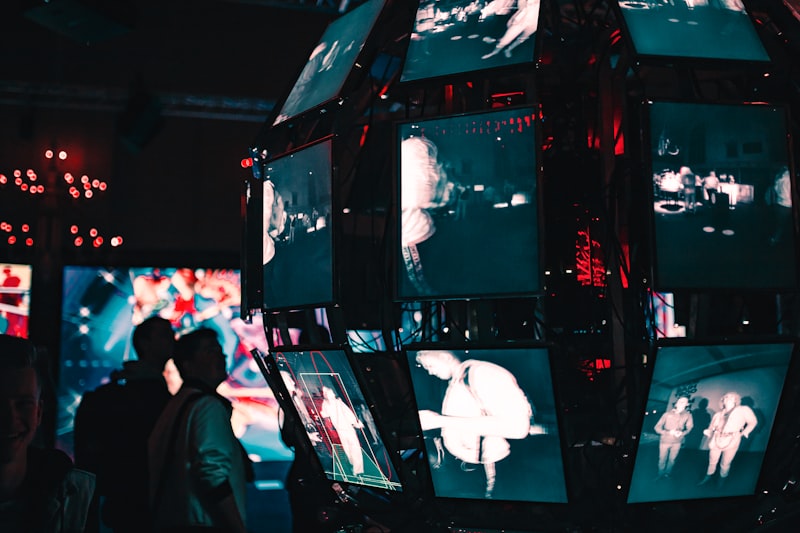In today’s retail landscape, technology isn’t just a tool; it’s the magic wand that retailers wave to create unforgettable shopping journeys. From augmented reality mirrors that let you try on clothes virtually to personalized recommendations based on your browsing history, technology is redefining how we shop.

One of the most significant impacts of technology on retail customer experience is personalization. Algorithms analyze your past purchases and preferences to suggest products you’re likely to love. It’s like having a personal shopper who knows your taste better than you do yourself.
Moreover, technology is making shopping faster and more convenient. Mobile apps allow you to browse and buy products with a few taps, eliminating the need to wait in long checkout lines. Scan-and-go systems let you simply pick up items and walk out, with payment automatically processed through your phone.
But it’s not just about convenience; technology is enhancing the in-store atmosphere too. Interactive displays engage customers with rich multimedia content, turning shopping into a dynamic experience. Digital signage not only showcases products but also provides real-time information and promotions.
Furthermore, data analytics play a crucial role in understanding customer behavior. Retailers gather insights from online interactions and in-store movements to refine their strategies. This data-driven approach ensures that every customer interaction is meaningful and contributes to building long-term relationships.
From Clicks to Bricks: How Digital Innovations Are Reshaping In-Store Shopping
Imagine walking into a store where your smartphone acts as a personal shopping assistant, guiding you through aisles based on your preferences and past purchases. This isn’t just a futuristic dream—it’s becoming a reality. Technologies like augmented reality (AR) and beacon technology are reshaping how we navigate physical stores. With AR, shoppers can visualize how furniture would look in their living room or try on virtual outfits before making a purchase. Beacons use Bluetooth to send personalized offers and recommendations to shoppers’ smartphones based on their location within the store.
But it’s not just about enhancing the shopping journey; digital innovations are also optimizing operational efficiencies for retailers. Inventory management systems powered by artificial intelligence (AI) ensure shelves are stocked with the right products at the right time, reducing out-of-stock scenarios and improving customer satisfaction. Predictive analytics analyze consumer behavior patterns, allowing retailers to anticipate trends and tailor their offerings accordingly.
Moreover, the checkout experience has undergone a significant transformation. Mobile payment solutions and self-checkout kiosks streamline the process, minimizing wait times and providing a more convenient experience for shoppers. Contactless payments have surged in popularity, driven by the need for hygienic shopping options in the wake of global events.
In-store digital innovations aren’t just about convenience—they’re about creating immersive and personalized shopping experiences that bridge the gap between online and offline worlds. As technology continues to evolve, so too will the ways in which we engage with physical retail spaces. The future of in-store shopping is bright, promising endless possibilities for both retailers and consumers alike.
Virtual Mirrors and Augmented Reality: Revolutionizing Try-Before-You-Buy in Retail
Virtual mirrors are not just about reflecting your image; they’re about transforming your shopping experience. Picture this: you’re browsing through an online store, eyeing that stunning dress. Instead of guessing if it’ll fit or look good on you, you simply click on the virtual try-on option. Instantly, your smartphone’s camera becomes your dressing room. You see yourself wearing that dress, adjusting the fit, twirling to see how it flows—all in real-time, right from the comfort of your home.
AR takes this a step further by superimposing virtual elements onto the real world. Want to see how those sunglasses would look on your face? AR overlays them seamlessly onto your live video feed, so you can see if they suit your style before making a purchase.
This technology isn’t just a novelty; it’s a game-changer for both consumers and retailers. For shoppers, it means making more confident buying decisions. No more returns due to size issues or dissatisfaction with the look. With virtual mirrors and AR, what you see is literally what you get, enhancing satisfaction and reducing the hassle of returns.
Retailers benefit too. By integrating virtual try-ons into their websites or apps, they enhance engagement and conversion rates. Customers spend more time interacting with products, which can lead to higher sales. Moreover, data from these interactions provide invaluable insights into consumer preferences, helping retailers tailor their offerings more effectively.
AI Shop Assistants: Personalizing Customer Interactions in Real Time
AI shop assistants are the new superheroes of retail, seamlessly blending technology with personalized customer service. They’re not just algorithms; they’re like digital stylists who can decode your preferences faster than you can say “fashion forward.” Whether you’re browsing for a new outfit or seeking the latest tech gadget, these virtual assistants are there to make your shopping experience smoother than ever.
What makes AI shop assistants so effective? It’s all about data. They analyze your past purchases, browsing history, and even social media posts to understand your tastes and preferences. It’s like having a knowledgeable friend who knows your wardrobe inside out and can predict your next craving for a trendy accessory.
But it’s not just about predicting; it’s about personalizing. AI shop assistants tailor recommendations in real time based on your current mood and the latest trends. If you’re feeling adventurous, they’ll nudge you towards bold choices. Prefer sticking to classics? They’ll guide you to timeless pieces that match your aesthetic.
Imagine having a virtual shopping companion who knows the inventory like the back of their hand. They can suggest complementary items, offer styling tips, and even alert you to exclusive deals before anyone else. It’s like having VIP access to the store’s best-kept secrets, all thanks to AI’s ability to learn and adapt.
Contactless Checkout: The Future of Seamless Retail Transactions
Contactless Checkout utilizes cutting-edge technology to streamline the payment process. Instead of fumbling with cash or swiping cards, customers simply wave their smartphones or scan QR codes to complete their purchases. This innovative method not only saves time but also enhances convenience, allowing shoppers to focus more on finding the perfect products rather than waiting in queues.
One of the standout features of Contactless Checkout is its speed. Transactions are completed in a matter of seconds, reducing checkout times significantly. This swift process not only benefits customers who are always on the go but also increases operational efficiency for retailers. Imagine being able to complete your grocery shopping during a lunch break or grabbing a coffee without missing a beat—all without the hassle of traditional payment methods.

Security is another paramount aspect of Contactless Checkout. Advanced encryption technologies ensure that payment information remains secure throughout the transaction. This gives customers peace of mind knowing that their financial data is protected against potential threats.
The adaptability of Contactless Checkout extends beyond retail stores. From restaurants to entertainment venues, this technology is reshaping how businesses interact with customers. It fosters a seamless and hygienic experience, particularly in a post-pandemic world where minimizing physical contact is crucial.
Frequently Asked Questions
What are the key technologies transforming retail customer experience
Discover how emerging technologies like artificial intelligence, augmented reality, and personalized recommendation systems are revolutionizing retail customer experiences. Learn how these innovations enhance convenience, personalization, and engagement, reshaping the way consumers interact with brands.
What are the benefits of augmented reality (AR) and virtual reality (VR) in retail
Discover how augmented reality (AR) and virtual reality (VR) enhance retail experiences by allowing customers to visualize products in real-world settings, fostering interactive engagement, improving decision-making through virtual try-ons, and creating immersive shopping environments.
How can retailers use data analytics to improve customer satisfaction
Learn how retailers leverage data analytics to enhance customer satisfaction by analyzing shopping patterns, preferences, and feedback. Discover effective strategies to personalize experiences, optimize inventory, and predict trends, ensuring tailored services that meet customer needs.
How does personalized marketing improve customer engagement in retail
Learn how personalized marketing enhances customer engagement in retail by tailoring promotions, product recommendations, and communication to individual preferences and behaviors, fostering stronger connections and increasing customer satisfaction.
What role does AI play in enhancing retail customer service
Learn how AI enhances retail customer service by automating tasks like personalized recommendations, improving chatbot interactions, and analyzing customer data for better insights.


